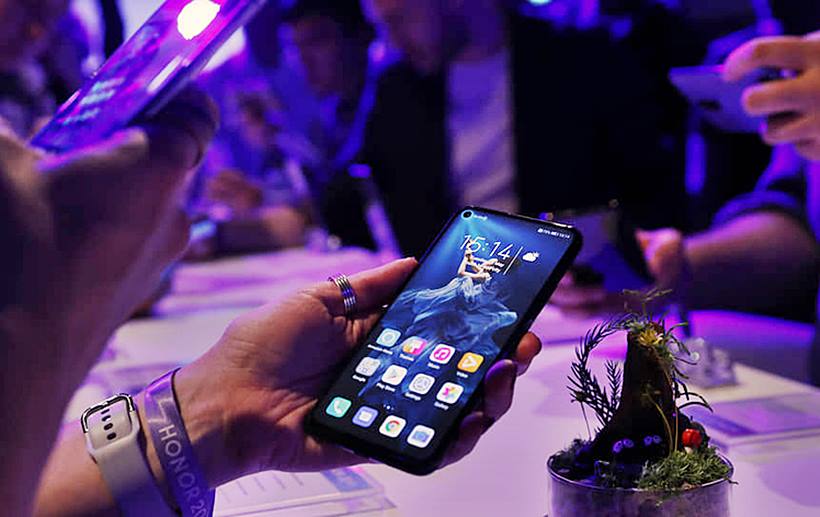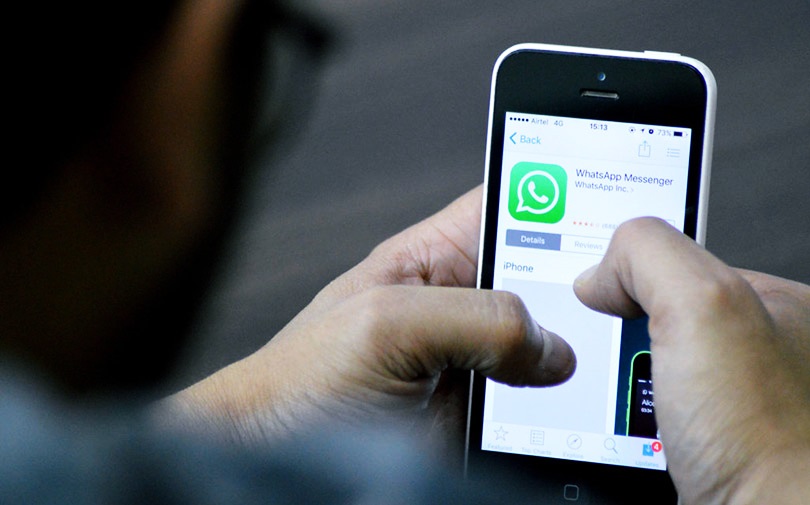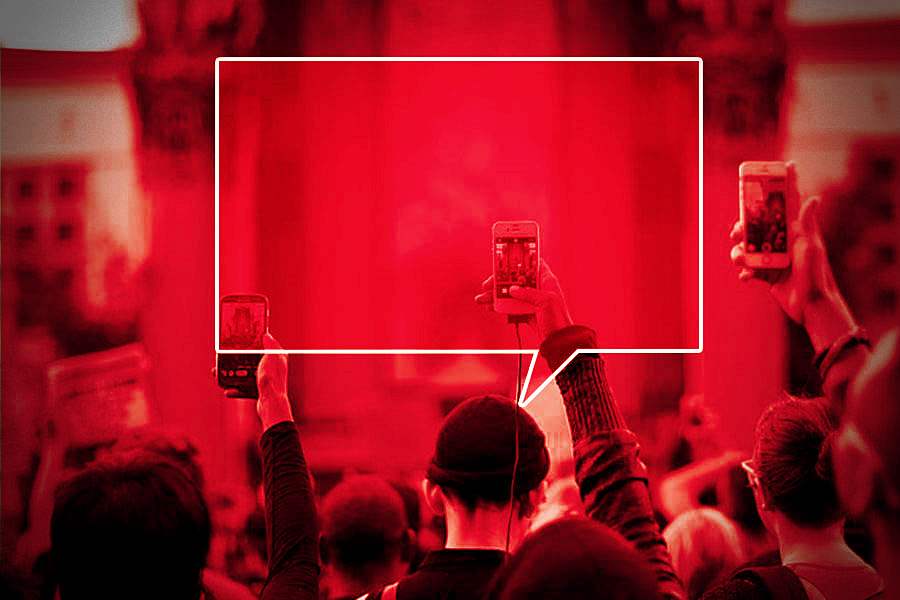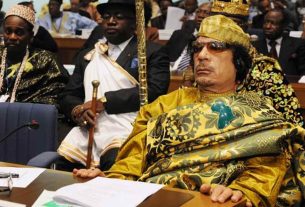Sun 05 June 2022:
In an era in which wars are no longer always fought on a battlefield, the world people live in has gradually changed and even some experiences have been turned into virtual and augmented reality and it could not be expected that fascism would remain traditional, according to a social media expert.
“In the digitalized world, decentralization has become an important feature. The masses are organized digitally to apply manipulation, and they can reach societies with the decentralization feature of this digital world. In this respect, digital fascism is actually a phenomenon that emerged with the spread of the Internet,” Deniz Unay told Anadolu Agency.

Many governments and presidents have voiced expressions of digital fascism or digital dictatorship in recent years, and digital fascism has turned into a severe threat to the societies of both developed and developing countries, according to Unay.
Turkish President Recep Tayyip Erdoğan addressed the issue in a video message to the Fourth Meeting of the Ministers and High Officials in Charge of Media and Information of the Organization of Turkic States held in İstanbul on May 14 and hosted by the Communications Directorate.
“Digital fascism has become a threat that hinders the right of billions of people to receive accurate and unbiased news. In particular, social media platforms — where there is no self-control, inspection, rule, or ethical values — pose serious risks for all societies. Searching for, reaching and defending the truth have taken on greater importance on these platforms where lies, defamation and distortion are commonplace,” Erdoğan said.

“In this regard, I see communication as an issue of strategic importance, at least as important as defense, security and health. Such meetings give me hope that we can further our cooperation in combatting disinformation, information security, national information technologies, and movies and series projects that prioritize the common culture,” he added.
Today, nearly 4 billion people out of the total world population are social media users, Unay said, adding around one out of every two people in the world spends an average of two and a half hours daily on at least a few social media applications.
Platforms that offer content to people not only enable users to be online more but also guide them politically, commercially and culturally, he argued. Artificial intelligence-oriented applications which record a person’s voice, image and location at any moment under the guise of making their lives easier and entertaining them actually pave the way for big businesses and governments that want big data to determine what is best for people, according to Unay.

WHAT HAS CHANGED WITH SOCIAL MEDIA?
Unay underlined that in the period when the Internet first emerged, called Web 1.0, communication was one-sided.
A certain group of people who knew computer language and content production methods, which were very complex at the time, were supplying information to the Internet, and the rest of the world could be involved in this process as if they were just reading a brochure. However, social media applications that entered our lives with Web 2.0 basically eliminated the difficulty of producing content and providing data flow from certain sources, which were the characteristics of the previous period, he said.
“Social media and (Canadian philosopher) Marshall McLuhan said that with the increase in electronic communication, the world would turn into a ‘global village.’ We live in this reality right now. The growing use of social media with smartphones has changed the behavior of societies, their lifestyles, as well as their cultures, traditions and even languages. Now, we see human communities that are almost identical to each other in the ‘new world order,'” said Unay.

In the past, for example, local clothes carried the characteristics of the society. But now everyone around the world wears similar clothes. The locality of fashion has disappeared, he noted.
He highlighted that there were country-specific food cultures around the world, while most people now eat the same meals, drink the same coffees and consume the same ice creams, adding that the concept of “world cuisine” has taken a turn that includes the same foods.
It was possible to see different architectural structures in different countries. Now, let alone the world’s metropolises, even smaller cities have similar architectural structures. People now live in replica cities with similar buildings, shopping malls and entertainment centers, according to Unay.

Unay stressed that people’s traditions and cultures began to resemble each other over time, and behaviors at important events that affect human life, from weddings to funerals, are getting closer and closer.
It has become possible to see that millions of social media users experience interesting trends in social media in a short time. Regardless of cultural differences, almost everyone has come to exhibit the same popular behaviors, he noted.
“With social media, people talk less, write less, but watch more. After a while, they are influenced by what they watch and copy the behavior of the people on the screen. The expression of screen addiction has become a serious medical problem,” he said.
“All these changes took place as social media became more and more involved in our lives,” he said.
“Since people’s preferences change with visual perception at a high rate, applications in interactive devices that are the closest to the human eye have the power to change many things about life over time,” he noted.

WHERE DOES DIGITAL FASCISM EXIST?
Unay said that digital fascism is heavily involved in lies and false news and content that affect the daily lives and political choices of societies.
Disinformation and creating information pollution have become the biggest weapons of groups fueled by digital fascism, he said.
While search engines can sort the results of news and content as they wish and bring the websites they want closer to the user’s access, they can restrict their access by removing the websites they do not want from the search results, Unay said.
“We saw the most recent example of this during the Russia-Ukraine war. Russian news sites were removed from search engines around the world and their access was restricted.”
With deepfake videos created by imitating sound and images and changing them as desired, it has become possible to present the desired content to the public and to make people believe it by spreading it uncontrollably, Unay said.
“Considering that there is no software that can distinguish deepfake videos from the real ones at the moment, it is really difficult for us to understand and perceive which video is real and which is fake.”
Increasing the interaction and viewing of desired hashtags and desired shares in social media agendas has become a good tool to guide users as desired, Unay remarked.
The continuous flow of the desired news and agendas in the international media in the desired direction has made world public opinion manageable and directable from a single source as desired, he added.

CAN MEASURES BE TAKEN AGAINST DIGITAL FASCISM?
Taking measures against digital fascism has become an important responsibility for humanity, Unay said, adding that in order to protect societies, laws to be enacted with international cooperation should be implemented digitally.
Unay warned that laws and practices enacted fall far behind the rapid flow of the Internet and social media, saying the way the enacted laws are implemented should be reviewed and digital control and practices should be implemented as soon as possible.
The most serious investment to be made against digital fascism will be to inform society quickly and effectively against possible disinformation, he pointed out.
Society believes and shares disinformation and purposeful misdirection on social media, while quickly-needed information from officials is slow, he said, adding people often believe more disinformation than information that comes from an official source, especially if it is late.
“There is a need for reference information sources against fake and false news. The news and information that have received high levels of interaction must be analyzed and the difference between truth and falsehood must be shown to the society,” Unay added.
-AA
___________________________________________________________________________________________________________________________________________
FOLLOW INDEPENDENT PRESS:
TWITTER (CLICK HERE)
https://twitter.com/IpIndependent
FACEBOOK (CLICK HERE)
https://web.facebook.com/ipindependent
Think your friends would be interested? Share this story!





